Treatment regimens
Challenge: Define mechanistic rules for combinatorial treatments to overcome resistance and avoid toxicity.
We set this challenge in 2017, however, we did not fund a team to address it. We're not accepting new applications.
Please note that the description below reflects the challenge as set by our Scientific Committee in 2017; we understand that there may have been developments in the field between then and now.
Currently viewing section: Context
Context
Despite a rapidly increasing arsenal of cancer treatments, the development of resistance remains one of the most important problems of modern cancer research. To overcome this challenge and to increase efficacy, therapies are frequently given in combination. However, it is not always clear which treatments should be combined or how they should be best administered to maximise response whilst reducing toxicity and overcoming resistance.
As we learn more about how patients respond to both conventional and targeted therapies, the biological processes that allow the eventual development of resistance are beginning to be understood. Recent studies have provided valuable biological insights into the mechanisms of drug resistance, which include the emergence of specific mutations that block drug binding, cross talk between signalling pathways that compensate for therapeutic inhibition, and activation of feedback loops that overcome drug function. There is an opportunity to build on this existing information to define mechanistic “rules” that would allow treatment modalities to be rationally and effectively combined based on the biology of resistance and potentially the evolutionary projection of the treated tumour. These insights could be used to design regimens that would enable clinicians to predict and ‘control’ how tumours respond to treatment rather than simply react to it.
Barriers and opportunities
It is anticipated that proposals addressing this challenge will go beyond clinical approaches based on comparing potential effects of various drugs or matrix-based mix-and-match strategies, to transform our understanding of how cancer therapies should be deployed. The Panel would welcome applications from teams of researchers with varied expertise that can address this challenge in new and unexpected ways.
Examples of the types of questions that could be addressed in this challenge include (but would not be limited to):
- How can we combine drugs that work on different targets in the same or complementary pathways so that they can be given at a lower and less toxic doses whilst maintaining efficacy and reducing side effects?
- Can we design sequential drug treatment protocols in which new vulnerabilities that are exposed by the initial therapy can be targeted by a follow up treatment with a second drug?
- Is it possible to design therapeutic regimens that elicit a “bystander” effect, enabling effective killing of the minor subpopulation of drug-unresponsive cells in a tumour?
- As various strategies are tested, can we build a compendium of generalised “rules” for potential combination therapies, and describe when and how these rules are best applied?
It is expected that the validation of proposed mechanistic rules in realistic preclinical models will be an essential aspect of successful applications.
Vision and Impact
This Cancer Grand Challenge is expected to result in biological insights into how cancer cells respond to perturbations of specific pathways and how resistance to therapies arises, being transformed into a set of mechanistic rules. The ultimate goal is that these rules could be used to inform meaningful combinatorial strategies leading to rationally-designed (and potentially personalised) novel treatment regimens for specific cancers, based on validated predictions of how individual tumours will respond.
Plain language summary: Why treatment regimens?
While some cancer cells are killed by treatment, others can survive. This is why some cancers can come back. The cancer cells that aren’t destroyed can continue to grow, forming a tumour again.
To get around this, doctors often give different treatments in combination. But it’s not always clear which combination is best, or how much of each treatment to give, or when the different treatments should be given.
This Cancer Grand Challenge aims to find clear answers to those questions by improving our understanding of combination treatments. If we better understand how treatments work together, we can make sure patients get the best combinations for their disease. And we might be able to predict how a patient’s cancer will respond to particular treatments, so we can tailor the approach and stay one step ahead of the disease.
